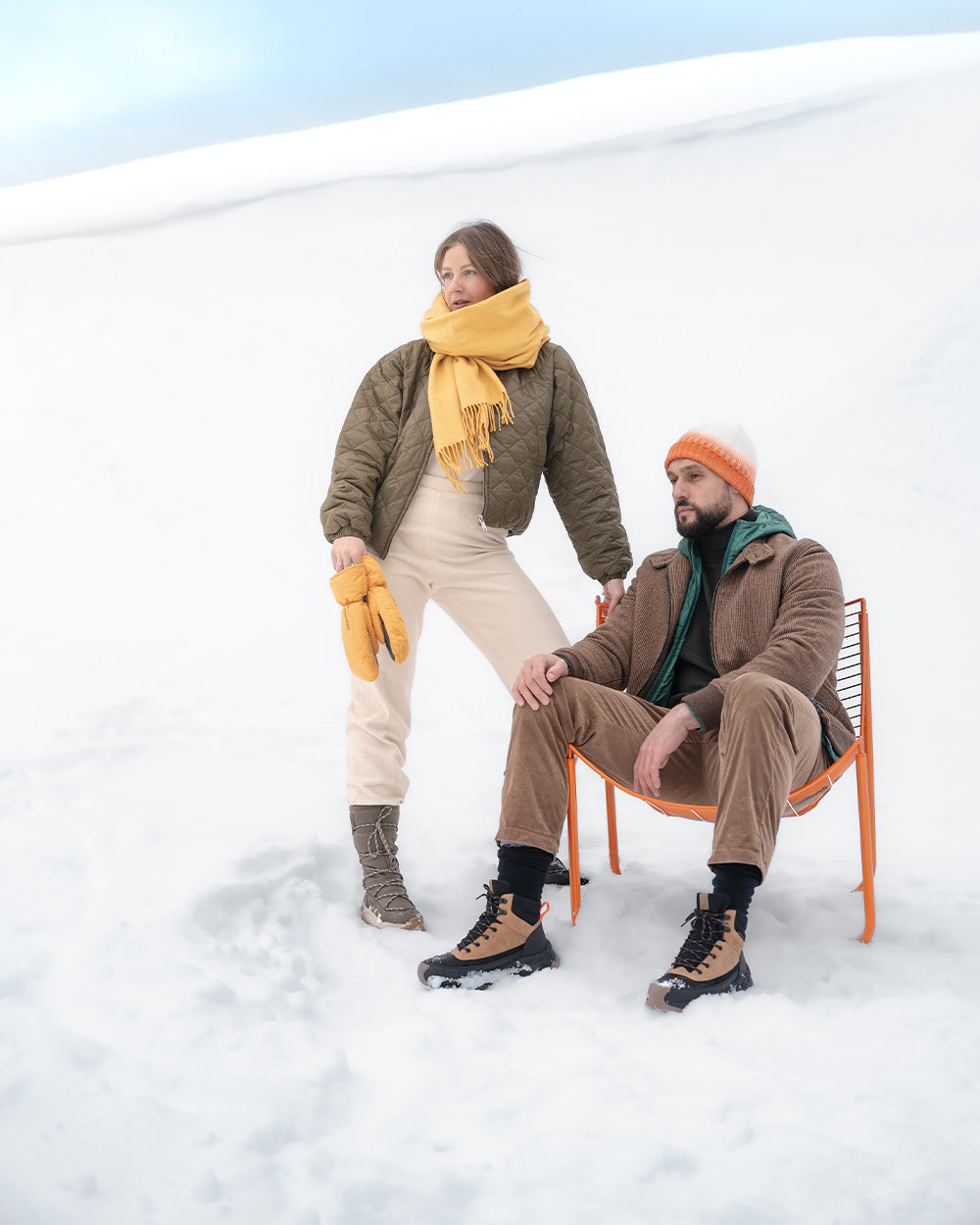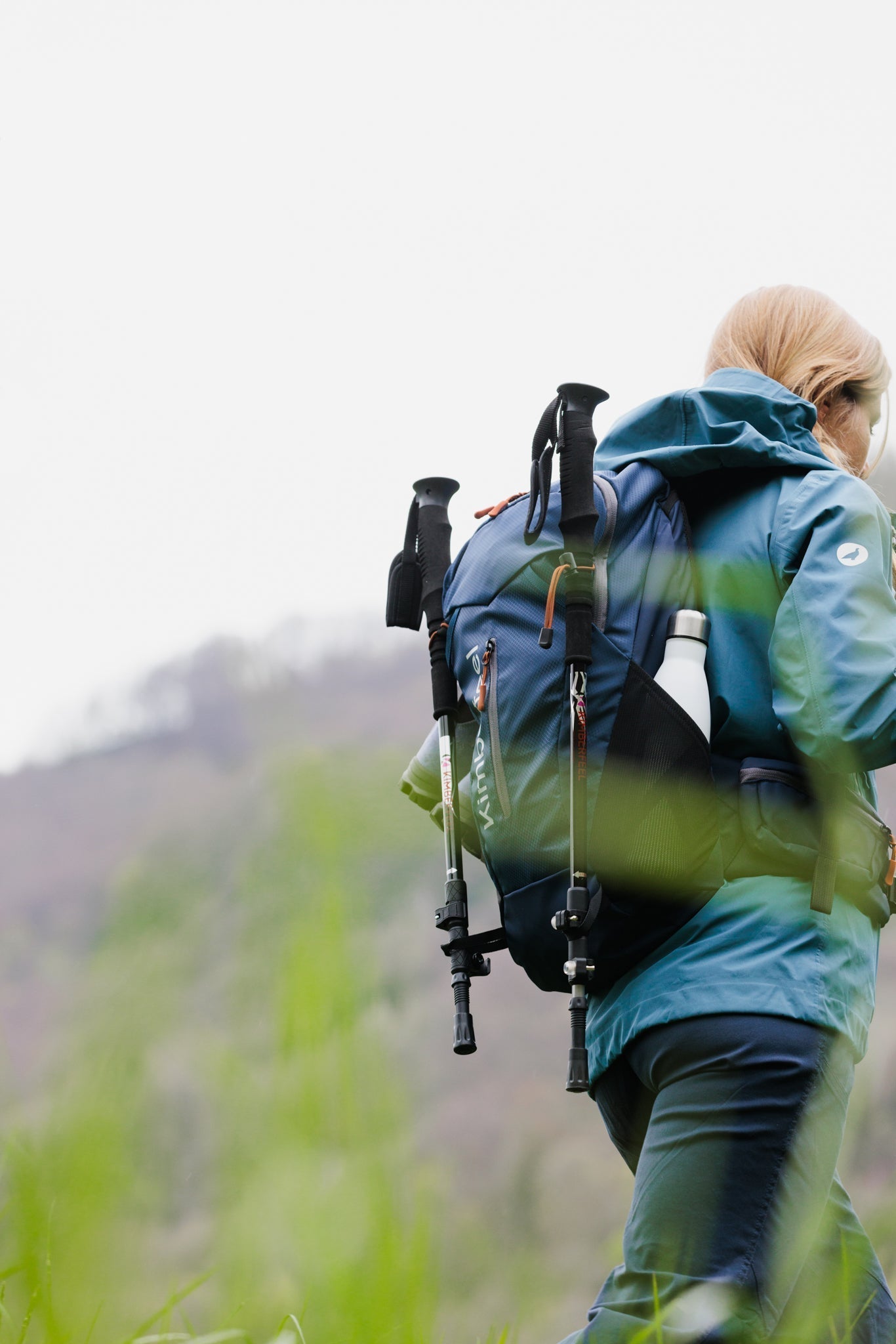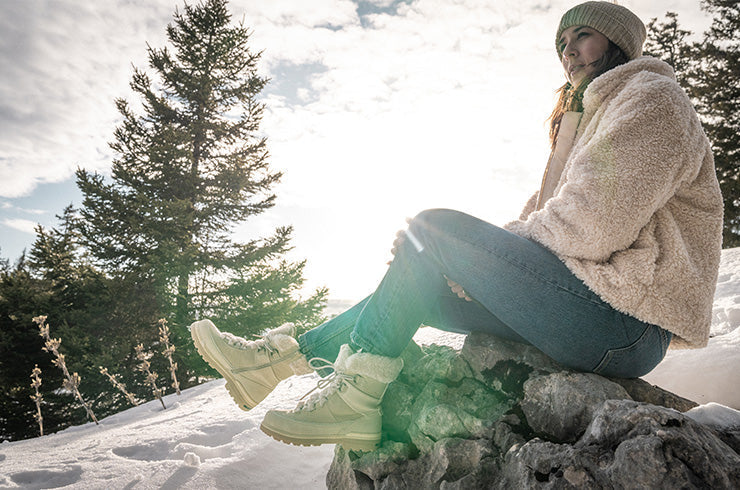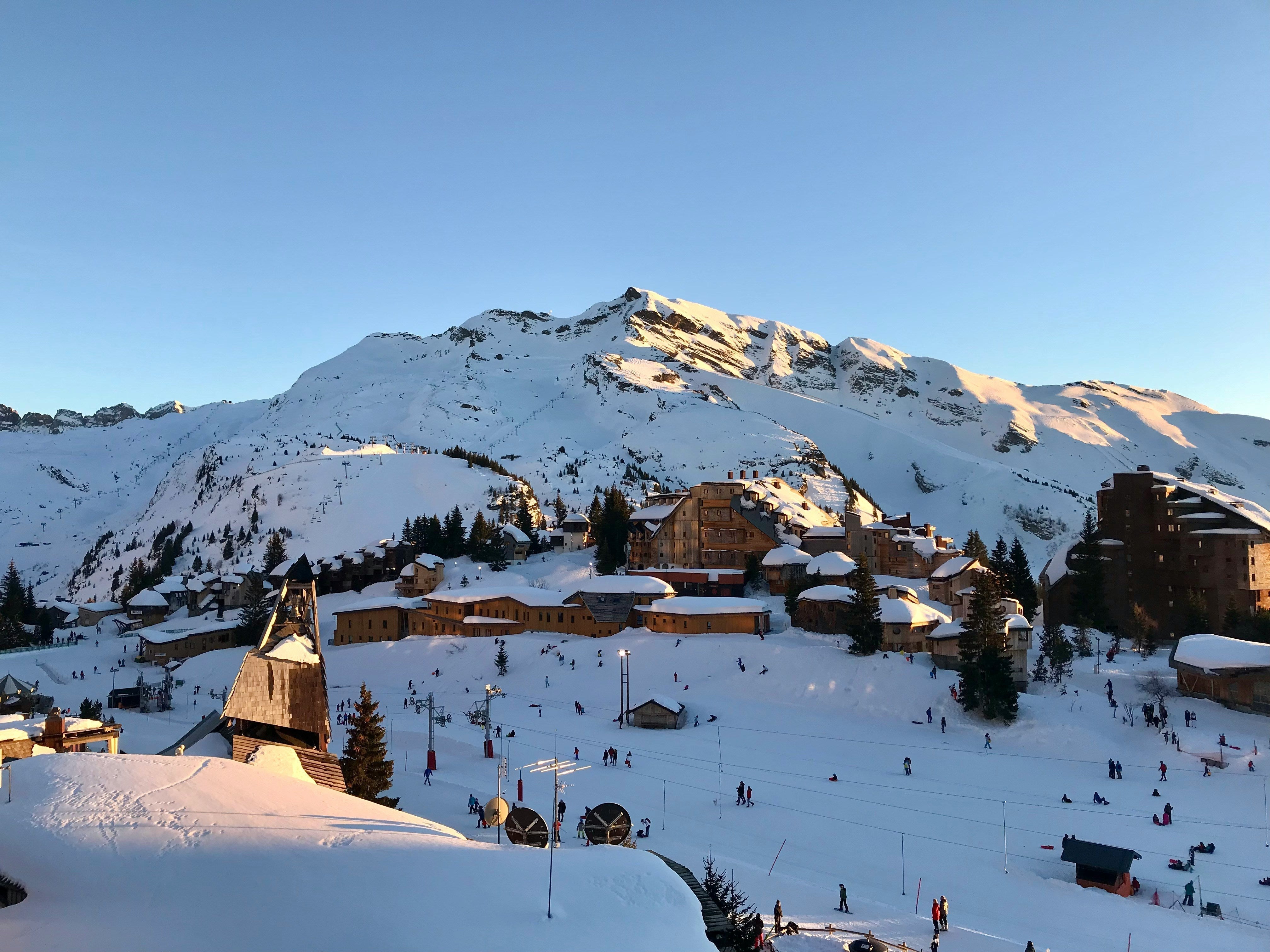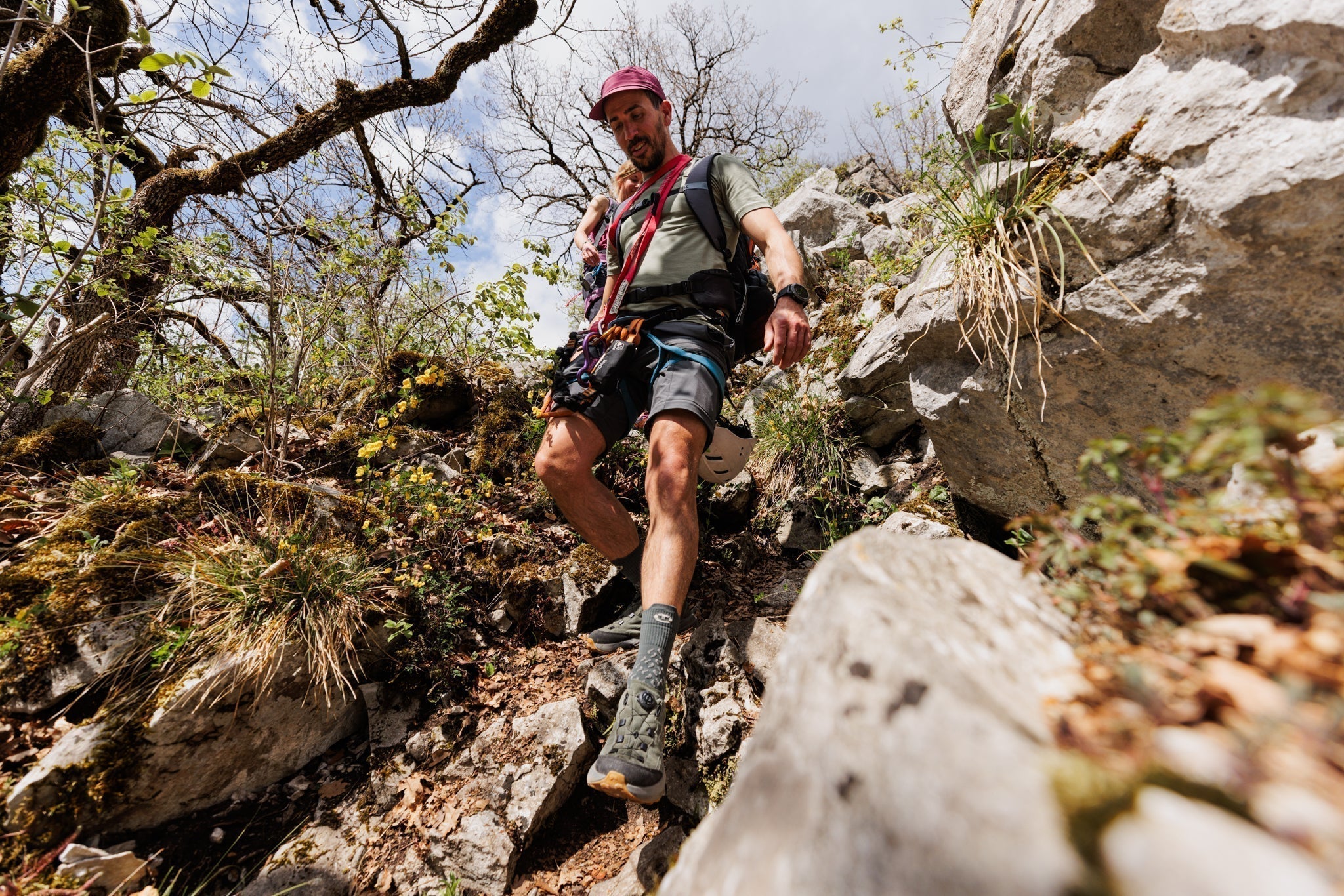You don't need to aim to climb Mount Everest to ask yourself this question. Even on a leisurely hike, poles can really make a difference.
They reduce the impact on the knees, improve balance, and better distribute the effort between the upper and lower body. As long as you don't choose them at random, of course.
Telescopic or folding? Aluminum or carbon? With cork or foam handles? We review the criteria that matter, the adjustments not to be overlooked, and the common mistakes to avoid.
Because in the end, a good stick is one that lets you forget about it, until you realize it saved you from ending up with your butt in the mud.
What are hiking poles used for?
Walking with poles isn't just for seasoned hikers. Even on an easy outing, they can quickly become your best friend.
Hiking poles have 3 main functions:
➜ Relieve your joints, especially when going downhill. They absorb some of the impact on the knees and hips.
➜ Help with balance, especially on slippery, uneven or crossing terrain.
➜ Distribute the effort between the upper and lower body, which limits muscular fatigue (especially when the bag is loaded).
They are also useful for pacing your walk, maintaining an upright posture, crossing a stream, testing the stability of a support or pushing back brambles that are a little too sticky.
The 5 key criteria for choosing the right poles
Choosing your hiking poles is a bit like choosing your shoes: it depends on what you're using them for, how comfortable they are, and how you walk. Here's what you really need to consider before buying.
01. The type of pole: telescopic, foldable, single-section
➜ Telescopic : Adjustable in height and adapts to all terrains. Easy to store but a little heavier.
➜ Foldable : very compact, practical for transport (backpack, travel). Less versatile in terms of adjustment.
➜ Monostrand : a single fixed strand, very light and rigid. More for Nordic walking or fans of minimalism.
If you're just starting out or if you're going to be on a variety of terrain, go for a telescopic handler. It's the most versatile.
02. The material: aluminum or carbon
➜ Aluminum : more shock-resistant, less expensive. It bends but does not break easily.
➜ Carbon: lighter, but also more rigid and more fragile. In the event of an impact, it can crack without warning.
If you are looking for robustness: aluminum.
If you want to save weight over long distances: carbon.
03. The handle: cork, foam, plastic
➜ Cork: absorbs perspiration well, comfortable to hold, forms to the hand over time.
➜ Foam: light and soft, but can wear out more quickly.
➜ Plastic: more durable but harder, less pleasant on long outings.
For day hikes or summer hikes: foam or cork. Avoid plastic if you hike often.
04. The adjustment system
There are two main types:
➜ Screw: simple, but can loosen over time or with humidity.
➜ Clip-on (lever): faster and more reliable, even with gloves.
Also check the adjustment range: the wider it is, the more you can adapt it to the terrain or lend it.
05. Tips and washers
➜ Tips: steel or tungsten. Tungsten tips last longer.
➜ The washers: interchangeable depending on the terrain. Small for summer, large for snow or soft ground.
Also consider rubber tips if you often walk on asphalt or rock: this reduces noise and wear.
How to correctly adjust the height of your poles?
One bad adjustment, and it's the beginning of unnecessary pain: stiff wrists, tense shoulders, a tight back... Fortunately, the adjustment is simple.
On flat ground, the basic rule: arms alongside the body, elbow at 90°, handle in the hand.
The stick should reach roughly at the height of your navel.
Too high: you put strain on your shoulders.
Too low: you shrink.
When climbing, shorten the poles by 5 to 10 cm. You will maintain good support without having to raise your arms.
When going downhill, lengthen them by 5 to 10 cm. This helps to better absorb shocks and maintain balance, especially if the terrain is steep.
Remember to check that both poles are at the same height once adjusted. And if you change terrain often: an adjustable model quickly becomes essential.
FAQ: Frequently asked questions from hikers
Can I take my poles on the plane?
No, not in the cabin. Even when folded, they are considered potentially dangerous. They must be placed in the hold. Remember to protect them well to avoid damage.
Can you lend your sticks to someone else?
Yes, if they're adjustable. But be careful with the height and the strap: everyone has their own way of walking, and a poorly adjusted pole can quickly become a nuisance.
Should you walk with two sticks or just one?
Two is better. You distribute the effort between your arms and legs. Using just one can create imbalance or tension, except for very light hiking.
Are poles useful on flat terrain?
Yes, especially if you're walking for a long time. They help relieve back and knee strain, even on easy trails. And they also improve posture.
How do I maintain my poles?
After each ride: wipe down any dust or mud, especially in the adjustment systems. From time to time: disassemble them, clean the inside, check the tightening. And change the tips if they are worn.
From what distance or duration of hike is it worth taking one?
As soon as you go over 1 hour 30 minutes or the terrain becomes uneven, it's not just a question of kilometers, it's also a question of fatigue and stability.
Should you really use wrist straps?
Yes, they allow you to push without overtightening the handle. You save energy and maintain good support, even if you relax your hand a little.
Can we walk with poles and a heavy backpack?
It's even recommended. With a heavy pack, poles help you distribute the weight better and protect your knees, especially on the descents.
Are short or long sticks better?
Neither. It's better to have adjustable poles so you can adjust the length to the terrain. If you're very tall or very short, also check the maximum/minimum height indicated on the models.
Can they be used for snowshoeing or ski touring?
Yes, provided you add large winter baskets. And check that the length is sufficient, especially in powder snow.
Ready to walk differently?
We often underestimate their impact. However, poles are a bit like technical soles : we can do without them... until the day we try them, and we never go back.
So if you are looking for strong, light and well-designed poles:
➜ Take a look at the Kimberfeel selection.

